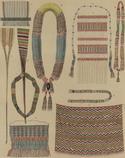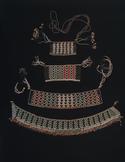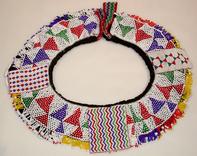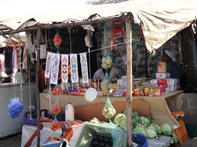

A to d. 19th century Material: Glass beads, sinew, brass studs, and seed pods a. Height: 7 cm; Width: 13 cm b. Height. 7 cm; Width: 18 cm c. Height 7 cm; Width: 36 cm d.
Height. 8 cm;Width: 55 cm South Sotho beadwork typically include stacked triangles fashioned through a combination of black, green, red and pink beads.
Some also have seed pod tassels, attesting to the ongoing interest in locally available materials following the introduction of imported glass beads.

Mid- to Late 20th century Because of the practice of recycling beads and beadwork panels, it is not uncommon to find garments that combine beaded sections made at different times.
Beads imported from Taiwan since the late 20th century are cheaper and larger than older glass beads originating from Europe. In some communities, labour-saving beadwork techniques have become increasingly fashionable, including a reliance on sparsely beaded, latticework designs.
Shembe Beaded Headbands


During the important annual rituals of the Ibandla lamaNazaretha, an independent church founded by Isaiah Shembe in the early 20th century, married women wear beaded headbands signalling respect (hlonipha) for important church elders and male members of their husbands’ families.
The style of these headbands has changed significantly over time. Today, the beadwork patterns are increasingly organic in design, while the use of luminous silver and gold beads in combination with pastel blues, yellows and greens have replaced the deep red, blue and black beads formerly favoured for these headbands.
This change appears to have been inspired by the work of Shembe bead specialists who were employed to produce beadwork for various European fashion houses under the guidance of designers working for this industry.
By Professor Sandra Klopper